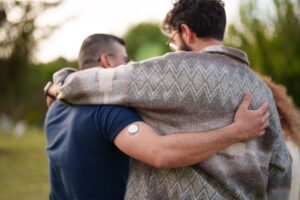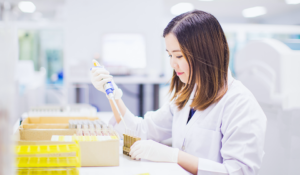
May 25, 2020
We are sharing information that addresses some of the top concerns of the T1D community. Note these responses are not intended to be medical advice, for that—as always—you must consult your own healthcare team.
The declining numbers of new COVID-19 cases and hospitalizations across Canada are positive news. But as provinces begin to release guidance as to how schools, workplaces, and public spaces can reopen, many people may be feeling anxious. People living with T1D and their families may have extra factors to juggle when making decisions and planning for return to work or school.
Each province or territory is outlining public health guidance on practices such as social distancing, and a locally relevant approach for returning to schools, workplaces, and public spaces. Familiarize yourself with guidance from your provincial or territorial health authority, and keep up to date on changes.
Regardless of where you live, maintaining practices of social distancing and good hygiene will continue to be crucial to minimize exposure for ourselves and those around us, as restrictions are loosened. Universal practice of these measures will help to minimize risk of infection and mean we continue to “flatten the curve”. In these early phases of loosening restrictions, everyone should continue to practice:
- Frequent handwashing or, when in public places, frequent use of hand sanitizer with a minimum of 60% alcohol base
- Avoid touching face, mouth, nose and eyes
- Minimizing trips to grocery stores and other locations visited by a high volume of people
- Maintaining a 2m (6 foot) distance from others when you do need to leave home
- Wearing a face covering when physical distancing is not possible (e.g. when shopping, on public transit, etc). A non-medical face covering will not protect you from COVID-19, but it can protect others by reducing the spread of droplets from the wearer. For more information on non-medical face coverings, see Health Canada guidance.
- Adhering strictly to local guidance on joining social gatherings with others, and applying the above practices during social gatherings wherever possible.
- Staying home for a minimum of 10 days if you have cold or flu symptoms.
- Familiarizing yourself with local COVID-19 testing practices and get tested if you are eligible – testing capacity in Canada is expanding, which is crucial for tracking cases and preventing spread during early phases of re-opening.
Will it be business as usual when we return to school or work right now?
As they prepare to reopen, schools and workplaces are putting safety procedures in place to minimize risk of exposure to the coronavirus. These can include:
- measures to ensure social distancing in classrooms or workplaces
- policies around how to interact with others
- cleaning procedures
- in some cases, provision and use of personal protective equipment
Reaching out to your school or employer to understand exactly what practices are being implemented may help to make decisions about and prepare for your return.
Is it safe to return to work or school with T1D?
Even with safety procedures in place, returning to work or school may mean an increase in risk of exposure at this time. It’s important to understand what the risks of COVID-19 are for people with T1D in planning to return.
Evidence thus far indicates that children and adults less than 65 years old with well-controlled T1D and without other health conditions are not at greater risk of getting COVID-19 and do not necessarily have worse outcomes of COVID-19 than their peers without T1D. Thus, T1D itself may not be a medical reason to delay return to work or school.
Recent data from the UK indicates that older age, high HbA1c (e.g. >10%), and obesity (BMI>30) put people with T1D at increased risk of death from COVID-19. Although similar data are not yet available from Canada, this new information indicates that older people with T1D, and those who live with them, should take every possible precaution to reduce their risk of exposure.Each person with T1D is different and if you are concerned about your health status and have questions about your own situation, seek guidance from your healthcare team. Factors that may mean a person with T1D is at higher risk of the consequences of COVID-19 include:
- Age 65 or older
- High HbA1c (>10%)
- BMI >30
- Complications or other conditions that have been associated with poor outcomes of COVID-19, including heart disease, hypertension, chronic respiratory diseases, and cancer
- Immune compromised status due to medical treatment, such as immunosuppressive drugs (for example after a kidney or islet transplant), chemotherapy, or a medical condition (note that T1D itself does not cause immune suppression)
If one or more of the above applies to you or someone you live with, and your school, workplace, or commute does not allow you to practice all of the social distancing practices recommended, consider delaying returning to work or school for a period of time – if you can. It’s best to discuss your individualized plan with your healthcare team and your school or employer.
If going back to school or work, is there anything we should do differently?
- In the short-term, if you can work or attend school effectively from home, you may choose to continue doing so while safety procedures are being established.
- If you physically return to work or school, ensure to practice all of the recommended safety measures at all times to minimize risk of COVID-19 to yourself and others. This is also important to remember during break times such as recess.
- If you usually take public transit, consider adapting your commute to minimize social contacts – for example by driving, travelling at low-peak times, or walking or cycling if possible.
- Avoid bringing items to school that would be quickly shared with other children, such as stationery (pencils/pens), books, or toys.
- If your child has T1D and is returning to school, add a good supply of disinfectant wipes, gloves and face coverings (ideally well-fitting medical masks for adults and children, if you can obtain them) to their T1D supplies kit and communicate with teaching and support staff in advance. This means that if your child needs physical assistance at school, the person assisting them will have quick access to protective equipment. More information on diabetes at school can be found here.
- If you have T1D and are returning to work, bring your own disinfectant wipes, gloves and face coverings (ideally well-fitting medical masks, if you can obtain them) along with your usual T1D supplies, and communicate with your employer in advance. This means that if you need physical assistance while at work, the person assisting you will have quick access to protective equipment. In communicating with your child’s school, or your employer, take the opportunity remind them about the life-saving potential of glucagon in the event of severe hypoglycemia.
If a person has had COVID-19, are they immune to getting it again?
Because the coronavirus is new, researchers cannot say for certain that an initial infection guarantees lasting protection. But based on the experience with other viruses, including other coronaviruses, they expect that people who recover will be shielded for perhaps at least a year or two, and from there the immunity might start to wane (but not disappear). Evidence suggests they would also be less likely to pass the virus on to others.
How long will it take to develop a vaccine for COVID-19?
A vaccine for COVID-19 is still many months away, and restrictions are being loosened at this time in Canada without availability of a vaccine. However, intensive research into prevention and treatment of COVID-19 is ongoing around the world, with many trials being led here in Canada.
If you have additional concerns not addressed here, write to us at T1Dquestions@JDRF.ca or check out breakthrought1d.ca/coronavirus for more information.




